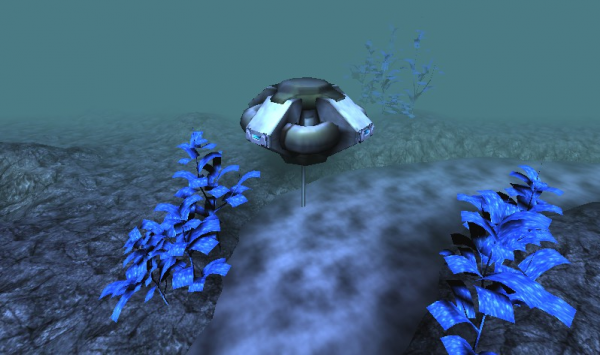BY LETTER
Robotics
 Image from Alex Mulvey | |
| Robot probe sampling water on a life-bearing world | |
The application of Artificial Intelligence to the control of machines; the art, science, and technology of designing and manufacturing robots and vecs.
The field of Robotics combines limited ai and mechanical engineering, and encompasses such diverse sub-fields such as bionics and biomimesis, navigation systems, sensors, pattern recognition methods, servos, molectronics, real-time control, autonomous behavior, aioid software, and virch and utility fog simulations, and more.
During the late Atomic and early Information Age, before the development of ai sentience, robotics included industrial robots, remote-controlled devices, and interplanetary probes, none of which were even sub-sentient. With the coming of turingrade ai and above during the middle information age onwards, there was a wealth of developments, including homebots, companion systems, service bots, autonomous vehicles and anvecs. By the interplanetary period robotics included the development of utility aioids, lovebots, anvecs, SCMs, self-replicating machines (neumanns), interstellar probes, sentient vehicles, primitive mecha, and vecs. There were further developments during the first federation period and after, including integral mechosystems, biomimetic and hylomimetic mecha, replicants, biobots, vec empires, and autowars and biowars, as developed nanotech allowed robotics and biotech to merge, ai passed new singularities, and advances in interstellar propulsion enabled whole new generations of space craft. Nowadays robotics and robots of all sorts from the most subsentient service bot to the transapient vec ai node are such an integral part of modern civilization it is impossible to conceive of life without them
[the term "robotics" was coined by Atomic Age scientist and fabulist Isaac Asimov]
Related Articles
- Blockbot
- Bot Marxism
- Botworld
- Microbot - Text by M. Alan Kazlev
Autonomous device on the microscale (10-6 m); larger than a nanobot but smaller than a macroscopic bot (the limit is usually set somewhat arbitrarily at one millimeter). Microbots are used for a variety of tasks such as monitoring, repairs, nanite transport and production and smart materials. - Mini-bot
- Mitebot - Text by M. Alan Kazlev
Microscopic or near-microscopic organic or mechanical robot, usually arachnid-like in form. Similar to a gnatbot except that it crawls rather than flies. - Nanite
- Nanobot
- Robot
- Synsects
Appears in Topics
Development Notes
Text by M. Alan Kazlev
Initially published on 22 December 2001.
Initially published on 22 December 2001.






